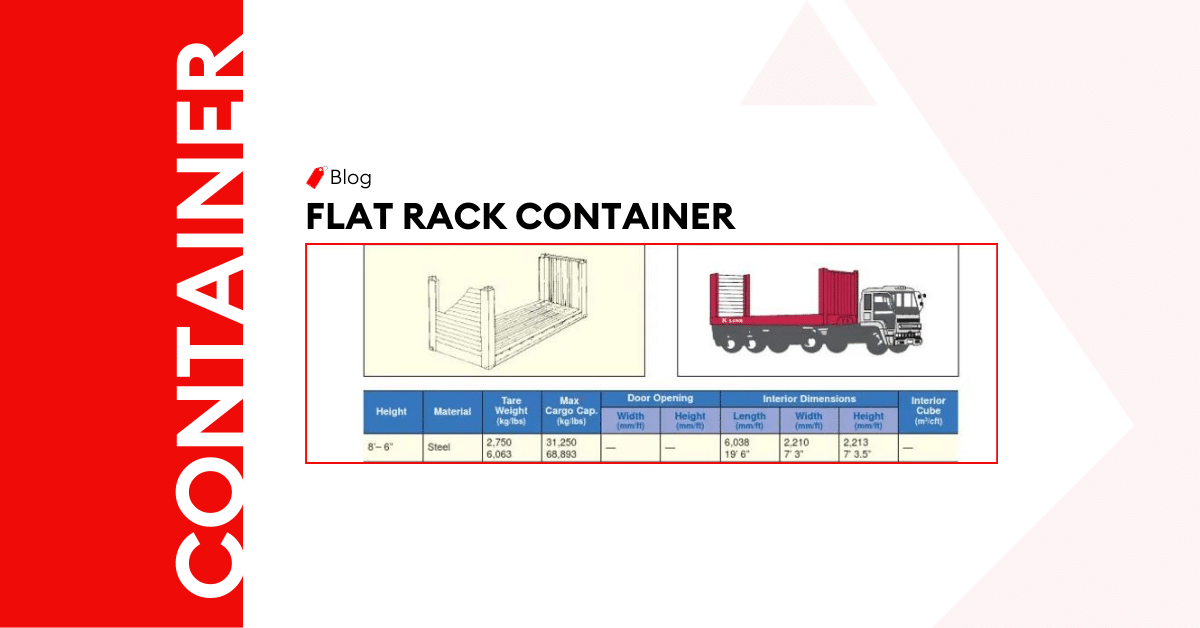
What is a Flat Rack Container The Ultimate Depth Guide
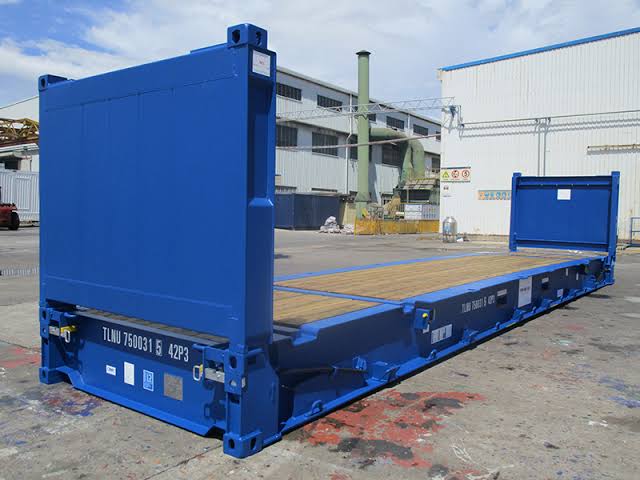
Introduction
Flat rack shipping containers are versatile and indispensable for transporting oversized, irregular, and heavy cargo. With open-sided and collapsible-end design, they accommodate challenging freight that cannot fit into standard containers.
Whether heavy machinery, industrial equipment, vehicles, or construction materials, flat rack containers revolutionize logistics by enabling efficient loading, securing, and transporting specialized cargo. Let’s explore these hauling units in detail.
What is a Flat Rack Container?
Definition and Purpose of Flat Rack Container
Flat rack shipping containers are specialized containers with open sides and collapsible end walls, providing a platform-like structure.
Differentiating Flat Rack Containers from Other Container Types
- Flat rack containers have open sides and collapsible end walls, resembling a flat platform.
- Flat racks, also known as collapsible containers, are ideal for carrying oversized or irregularly shaped cargo that cannot fit into regular containers.
- Flat rack containers allow cargo to be loaded and unloaded from the top or sides.
Key Features and Components of Flat Rack Container
Some of the key features include,
- Open sides
- Collapsible end walls
- Corner posts and lashing rings along the base and sides
The Benefits of Shipping with Flat Rack Container
Versatility for Oversized and Irregular Cargo
Collapsible flat rack containers can accommodate cargo that cannot fit into standard containers due to size, shape, or weight. The open sides and collapsible end walls offer a flat, secure platform-like structure.
Secure and Stable Transportation
Loading and securing cargo utilizes lashing rings and corner posts. Also, the platform-like structure offers a flat and secure base for the cargo.
Simplified Loading and Unloading Processes
There’s easy access to the cargo from multiple directions – cranes or forklifts can load and unload the shipment from the sides or top to ensure faster turnaround times.
Intermodal and Space-Efficient Shipping
Flat rack containers align with ISO standard dimensions, making them suitable for seamless transitions between ships, trains, and trucks, facilitating intermodal transportation.
Cost-Effective Solution for Bulky Freight
Flat rack containers provide a platform-like structure and open sides to accommodate bulky cargo that may not fit into standard containers, eliminating costly modifications.
Customizable Options for Specialized Needs
Customizable options include adjustable or removable end walls to suit different cargo lengths, reinforced floors to handle heavy loads, and additional securing points to transport delicate or irregularly shaped items.
Eco-Friendly and Reusable Container
Flat Rack containers are typically constructed from durable materials like steel, making them sturdy and long-lasting, reducing the environmental impact associated with container production.
Facilitating Special Project Shipments
Flat rack containers, however, provide a secure and stable platform to transport large machinery, industrial equipment, vehicles, construction materials, and other specialized items needed for unique projects
Ideal for Heavy Machinery and Equipment
The open container sides allow easy access, and the collapsible end walls enable even greater flexibility for loading and unloading oversized cargo.
Enhancing Logistics Flexibility
The containers allow easy loading and unloading from various directions, seamlessly integrate into intermodal transportation networks, and enable adaptation to meet specific cargo requirements.
What are the Different Flat Rack Containers Dimensions?
Overview of Standard Sizes: 20ft and 40ft Flat Rack Container
The dimensions of such containers are usually categorized as 20 feet or 40 feet flat rack container. The 20-foot flat rack container typically measures approximately 20 feet in length, 8 feet in width, and 8.5 feet in height, while the 40′ flat-racks have similar width and height dimensions but is approximately 40 feet in length.
Internal and External Dimensions of Flat Rack Container
Internal Dimensions (approximate)
Size | Length | Width | Height |
20’ Container | 18’6” (5.64 meters) | 7’8” (2.33 meters) | 7’5” (2.27 meters) |
40’ Container | 38’5” (11.71 meters) | 7’8” (2.33 meters) | 7’5” (2.27 meters) |
External Dimensions (approximate)
Size | Length | Width | Height |
20’ Container | 20 feet (6.06 meters) | 8 feet (2.44 meters) | 8’6” (2.59 meters) |
40’ Container | 40 feet (12.19 meters) | 8 feet (2.44 meters) | 8’6” (2.59 meters) |
Get In Touch
Load Capacity and Weight Restrictions
Generally, a 20-foot Flat Rack container has a load capacity of around 45,000 to 50,000 pounds (20,412 to 22,680 kilograms), while a 40-foot Flat Rack container can carry approximately 85,000 to 100,000 pounds (38,555 to 45,359 kilograms).
Characteristics of Flat Rack Containers
Unique Design Features and Construction of Flat Rack Containers
- Open sides and collapsible end walls
- Side walls composed of robust steel or other durable materials
- Collapsible end walls
- Corner posts and lashing rings along the base and sides
Flooring and Load Securing Mechanisms
Strong, durable materials such as hardwood or steel, ensure the flooring can handle heavy loads without deformation. Corner posts and lashing rings help secure load with straps, chains, or other fastening methods.
Structural Strength and Durability
Durable steel engineering absorbs the rigorous demands of shipping and handling, allowing the freight containers to support heavy loads without deforming.
The Most Common Applications of Flat Rack Container
Overview of Industries and Cargo Types That Utilize Flat Rack Containers
Construction, mining, and manufacturing industries utilize flat racks to move heavy machinery, equipment, and construction materials. The automotive industry transports vehicles and auto components while the energy sector transports large pipes and equipment for oil and gas projects.
Examples of Specific Goods Transported Using Flat Rack Container
- Bulldozers, excavators, cranes, and industrial machinery
- Boats and yachts
- Pipes and steel beams
- Automobiles, trucks, and heavy vehicles
How Al Sharqi Can Help with Flat Rack Container Shipping
Al Sharqi’s expertise in handling flat rack shipping containers and specialized cargo makes us a valuable partner for businesses seeking reliable and efficient shipping solutions. With our experience in dealing with challenging cargo types, Al Sharqi can offer expert advice and support throughout the transportation process.
Additionally, we provide extensive network coverage for domestic and international shipping within and outside the UAE. Each of our services provides tailored logistics solutions and ensures that businesses receive customized services according to their specific cargo needs.
Conclusion
From their unique design features to load capacity securing mechanisms, collapsible and non-collapsible flat racks shipping containers ensure the safe and efficient shipment of specialized cargo. These shipping containers are invaluable for businesses seeking secure, efficient, and tailored solutions for their specialized cargo requirements. Embrace this innovative solution to elevate your logistics capabilities and optimize your cargo transportation processes.
FAQs
Our experience in the field and our global network
Cargo that is oversized, irregularly shaped, or too heavy for standard containers are most suitable for flat rack containers.
Cargo is typically loaded onto the container from the side or top using cranes or forklifts. Then, the collapsible end walls are raised, and straps or chains connect to the lashing rings to firmly secure the cargo.
The internal dimensions of a 20-foot Flat Rack are approximately 18’6” in length, 7’8” in width, and 7’5” in height. A 40-foot Flat Rack has internal dimensions of around 38’5” in length, 7’8” in width, and 7’5” in height. A 20-foot container has a load capacity of approximately 45,000 to 50,000 pounds, and a 40-foot variant can carry around 85,000 to 100,000 pounds.
Yes, flat rack containers are stackable. When empty, they can be stacked on top of each other, allowing for space-efficient storage and transport.
Using flat rack containers for special project shipments provides easy loading and unloading, ensuring efficient handling. Additionally, their versatility in intermodal transportation allows seamless transitions between different modes.
Related Articles
The Ultimate Guide to Dry Container {Types, Dimensions & Specifications}
Introduction In the vast ocean of international trade, about 90 percent of cargo transport relies on
What is Ventilated Container – A Complete in Dept Guide
Introduction In the dynamic world of global trade, transporting perishable goods is pivotal in deter
The Complete Guide To Reefer Container – Types, Specifications & Sizes
Introduction Safeguarding the freshness and quality of cold or frozen cargo is a priority in the UAE




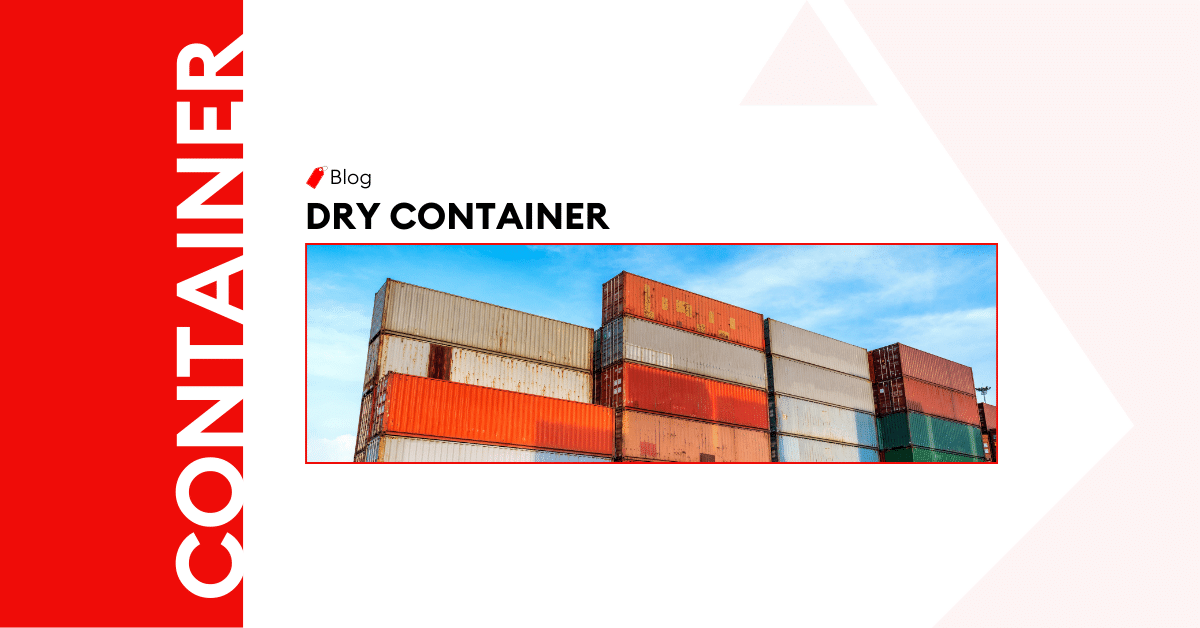
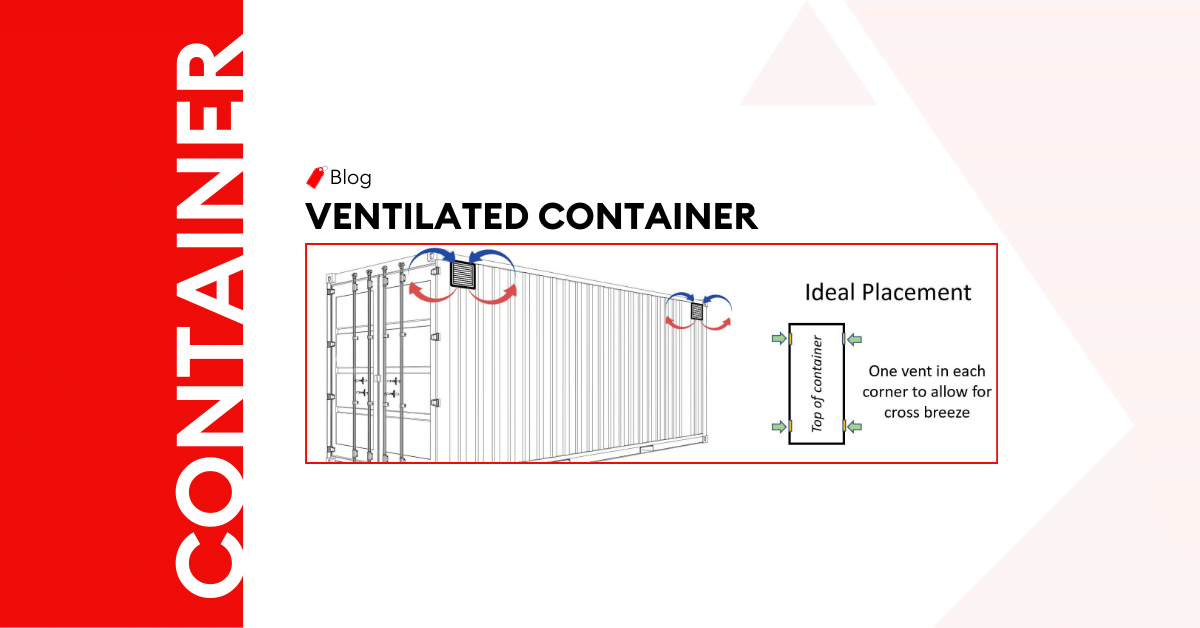
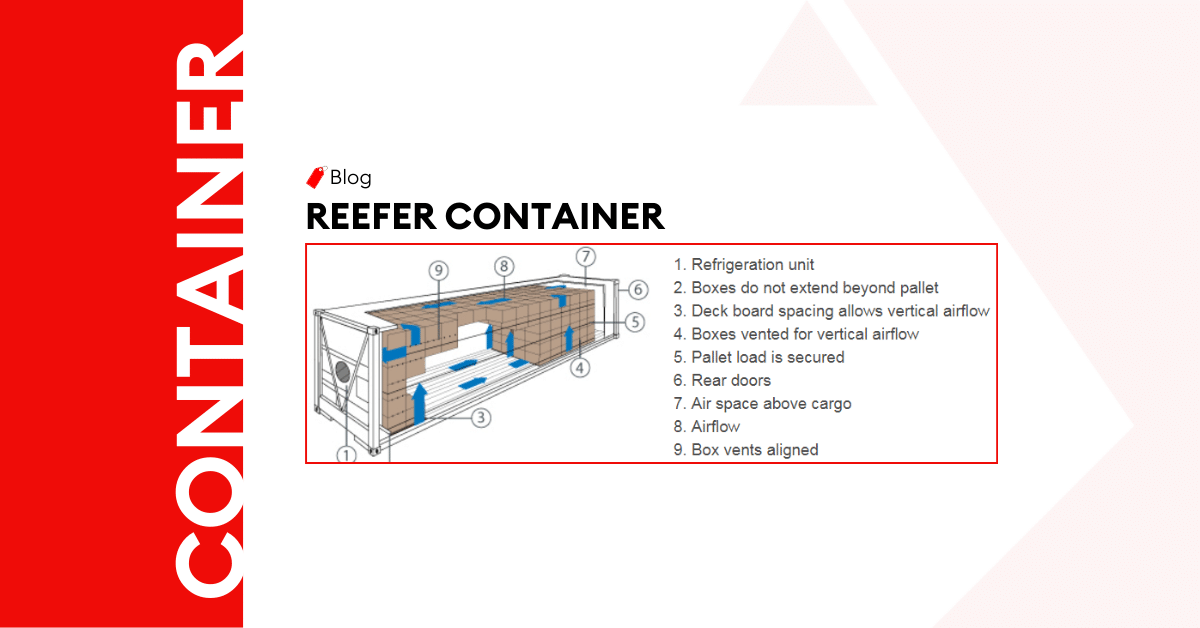
Post a comment
You must be logged in to post a comment.